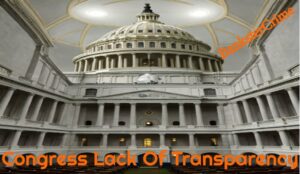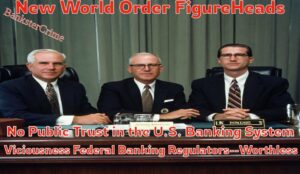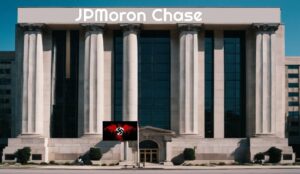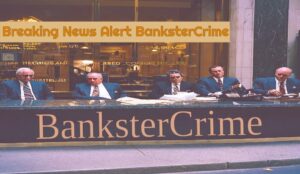But it has surpassed its larger counterparts in the extent to which it has been embroiled in a series of scandals involving reckless lending practices and customer deception.
Cheating is a selfish act that gives us an advantage over others who are facing the same challenge. As Christians, we should seek to help others fairly and justly while maintaining moral integrity and a godly reputation. Cheating simply does not help uphold that standard.

Evoking the Stagecoach
The name Wells Fargo evokes the legendary stagecoach line, but the big bank now going by that title is actually the descendant of Norwest, a bank holding company based in Minneapolis. Norwest had its origin in 1929, when several struggling Midwest banks joined forces in a cooperative called Northwest Bancorp (known as Banco). By pooling resources, the participants in Banco survived the Depression as many other banks went under.
It also survived the following few decades but ran into problems in the 1980s related to the weak farm economy as well as bad foreign debts. Having adopted the name Norwest, the company responded to these problems both by cutting operating costs and by going on an acquisition spree, taking advantage of the easing of restrictions on interstate banking.
These purchases were generally of modest proportions, but in 1998 Norwest joined the trend toward blockbuster mergers by arranging to purchase WellsFargo & Company. The old Wells Fargo had added banking to its express services in the mid-19th century. That banking business was spun off in 1905, just in time to play a key role in the reconstruction of San Francisco after the earthquake and fire the following year. Over the subsequent decades, it continued to grow and became one of the leading financial institutions on the West Coast. In 1969 it created the holding company WellsFargo & Company.
Like Norwest, WellsFargo struggled with a high volume of problems loans in the early 1980s and then went on to make big acquisitions, especially its California rival Crocker National Corporation in 1986. That same year it paid a $75,000 fine for failing to report large currency transactions. In 1992 it agreed to pay $43 million to settle a lawsuit alleging that it conspired to fix the interest rates on millions of credit card accounts.
In 1996 WellsFargo made another aggressive move by pursuing a hostile takeover of Los Angeles-based First Interstate Bancorp. WellsFargo prevailed in the four-month battle with white knight First Bank System, but its culture clashed with that of First Interstate. The bad fit brought about serious deterioration in the financial performance of the combined company.
Things went more smoothly after WellsFargo agreed to the takeover by Norwest, which adopted the California bank’s name. But the consolidation did not end. In 2000 the new Wells Fargo & Co. agreed to acquire Salt Lake City-based First Security Corp.
Wells Fargo also ran into a series of problems with regulators. In 2002 it agreed to pay a penalty of $150,000 to settle Securities and Exchange Commission (SEC) charges of improperly switching customers among mutual funds. In 2005 the securities industry regulator NASD (now FINRA) finedWells Fargo $3 million for improper sales of mutual funds. In 2007 NASD fined Wells Fargo Securities $250,000 for the failure of one of its analysts to disclose that he had accepted a job at the company he was writing about.
The Wachovia Takeover
Amid the reshuffling of the big banks during the financial meltdown of 2008, Wells Fargo derailed a government-brokered purchase of Wachovia Corp. by Citigroup and took over the North Carolina-based bank for some $15 billion in stock. Wells Fargo received $25 billion from the federal government’s Troubled Assets Relief Program (TARP), which it later repaid.
Wachovia was the result of the 2001 merger of two leading North Carolina banks—First Union and the old Wachovia. In 2003 the new Wachovia took a controlling interest in Prudential Securities, which had been hit with more than 100 lawsuits over its sale of dubious limited partnerships during the 1980s and in 1993 had to pay $370 million to settle related fraud charges brought by the SEC. Three years later, the securities business had to pay $600 million to settle charges of mutual fund market timing abuses.
Wachovia took a deep plunge into the home mortgage business with a 2006 deal to acquire the California savings & loan Golden West Financial. That same year, Wachovia agreed to pay $25 million to settle charges by securities regulators in nine states that it failed to prevent conflicts of interest between its research and investment banking businesses. And in 2008 Wachovia agreed to pay up to $144 million to settle charges that it failed to properly monitor telemarketers who used its accounts to steal millions of dollars. Just after the Wells Fargo deal was reached, Wachovia announced a $23.9 billion quarterly loss.
Over the following months, Wells Fargo also had to contend with new Wachovia regulatory violations and lawsuit settlements, including: a $4.5 million FINRA fine in February 2009 for violations of mutual fund sales rules; a total fine of $1.1 million levied by FINRA on Wachovia Securities and First Clearing in March 2009 for failing to send required notifications to customers; a $1.4 million FINRA fine in June 2009 for failing to send disclosure documents to customers; a $40 million settlement in June 2009 of SEC charges that the Evergreen Investment Management business Wells Fargo inherited from Wachovia misled investors about mortgage-backed securities; a $160 million settlement in March 2010 of federal charges relating to money laundering by its customers; a $2 billion settlement with the California attorney general in December 2010 of charges relating to foreclosure abuses; an $11 million settlement in April 2011 with the SEC of charges that it cheated the Zuni Indian Tribe in the sale of collateralized debt obligations; and a $148 millionsettlement in December 2011 of federal and state municipal securities bid rigging charges.
A Slew of Its Own Settlements
Wells Fargo had problems of its own. In November 2009 it had to agree to buy back $1.4 billion in auction-rate securities to settle allegations by the California attorney general of misleading investors. In May 2011 it was fined $1 million by FINRA for failing to send disclosure documents to customers. That same month, it agreed to pay up to $16 million to settle charges of violating the Americans with Disabilities Act.
In July 2011 Wells Fargo agreed to pay $125 million to settle a lawsuit in which a group of pension funds accused it of misrepresenting the quality of pools of mortgage-related securities. That same month, the Federal Reserve announced an $85 million civil penalty against Wells Fargo for steering customers with good qualifications into costly subprime mortgage loans during the housing boom.
In November 2011 Wells Fargo agreed to pay at least $37 million to settle a lawsuit accusing it of municipal bond bid rigging. The following month, FINRA fined it $2 million for improper sales of reverse convertible securities and later another $2.1 million for failing to properly supervise the sale of exchange-traded funds. Wells Fargo was one of five large mortgage servicers that in February 2012 consented to a $25 billion settlement with the federal government and state attorneys general to resolve allegations of loan servicing and foreclosure abuses. The New York Attorney General later sued Wells Fargo for breaching the terms of that settlement.
In July 2012 the U.S. Justice Department announced that Wells Fargo would pay $175 million to settle charges that it engaged in a pattern of discrimination against African-American and Hispanic borrowers in its mortgage lending during the period from 2004 to 2009. In August 2012 Wells Fargo agreed to pay $6.5 million to settle SEC charges that it failed to fully research the risks associated with mortgage-backed securities before selling them to customers such as municipalities and non-profit organizations.
In January 2013 Wells Fargo was one of ten major lenders that agreed to pay a total of $8.5 billion to resolve claims of foreclosure abuses. A few months later, Wells Fargo settled a lawsuit alleging that it neglected the maintenance and marketing of foreclosed homes in black and Latino areas by agreeing to spend at least $42 million to promote home ownership and neighborhood stabilization.
In October 2013 Freddie Mac announced that Wells Fargo would pay $869 million to repurchase home loans the bank had sold to the mortgage agency that did not conform to the latter’s guidelines.
In December 2014 FINRA fined Wells Fargo Securities $4 million as part of a case against ten investment banks for allowing their stock analysts to solicit business and offer favorable research coverage in connection with a planned initial public offering of Toys R Us in 2010.
In March 2016 the SEC charged Wells Fargo with defrauding investors in a municipal bond offering to finance 38 Studios, a Rhode Island startup video game company founded by former Boston Red Sox pitcher Curt Schilling that eventually went bankrupt, leaving the state on the hook for $75 million in debt.
In April 2016 the Justice Department announced that Wells Fargo would pay $1.2 billion to resolve allegations that the bank certified to the Department of Housing and Urban Development that certain residential home mortgage loans were eligible for Federal Housing Administration insurance when they were not, resulting in the government having to pay FHA insurance claims when some of those loans defaulted.
In August 2016 the Consumer Financial Protection Bureau announced that Wells Fargo would pay a penalty of $3.6 million plus $410,000 in restitution to customers to resolve allegations that it engaged in illegal student loan servicing practices.
In September 2016 the CFPB imposed a fine of $100 million against Wells Fargo in connection with the revelation that for years bank employees were creating more than two million new accounts not requested by customers, in order to generate illicit fees. The company also paid $35 million to the Office of the Comptroller of the Currency and $50 million to the City and County of Los Angeles.
The case generated a major scandal, and the bank’s CEO John Stumpf was denounced in a Senate hearing and then one in the House. He was forced to return about $41 million in compensation, but this did not diminish the controversy. The California Treasurer announced that the state would suspend many of its business dealings with the bank; Chicago later did the same. Stumpf subsequently gave in to the pressure and resigned. The bank later clawed back an additional $75 million from Stumpf and another former executive.
In a separate case, Wells Fargo agreed to pay $50 million to settle a class action lawsuit alleging that the bank overcharged hundreds of thousands of homeowners for appraisals ordered after they defaulted on mortgage loans.
In April 2017 Wells Fargo was ordered to provide $5.4 million in back pay, damages and legal fees to a bank manager who had been terminated in 2010 after reporting suspected fraudulent behavior to superiors and a bank ethics hotline.
In July 2017 it was revealed that more than 800,000 customers who had taken out car loans with Wells Fargo were charged for auto insurance they did not need.
Several weeks later, the bank disclosed that the number of bogus accounts that had been created was actually 3.5 million, a nearly 70 percent increase over the bank’s initial estimate.
In February 2018 the Federal Reserve took the unprecedented step of barring Wells Fargo from growing any larger until it cleaned up its business practices. The agency also announced that the bank had been pressured to replace four members of its board of directors.
In April 2018 the Office of the Comptroller of the Currency and the Consumer Financial Protection Bureau fined Wells Fargo a total of $1 billion for selling unnecessary products to customers and other improper practices.
In May 2018 Wells Fargo agreed to pay $480 million to settle a class action lawsuit filed by shareholders accusing the company of making false statements about its business practices.
In August 2018 Wells Fargo agreed to pay $2.09 billion to resolve a Justice Department case involving the misrepresentation of the quality of loans used in residential mortgage-backed securities the bank issued in the period leading up to the financial crisis.
In December 2018 Wells Fargo agreed to pay $575 million to settle claims brought by all 50 states and the District of Columbia in connection with a variety of questionable practices. Source
Bankers and gangsters are mainstream in today’s financial institutions, these large to midsize banks and there under links the “bankers” are the corrupt wheeler-dealers, they manipulated markets, sliced and diced mortgages (fraudulent foreclosures) and played loose with other people’s money, they are gangsters.. Their history proves the bad fruit that has harmed the American people….
StevieRay Hansen
Editor, Bankster Crime
MY MISSION IS NOT TO CONVINCE YOU, ONLY TO INFORM…
![]()




